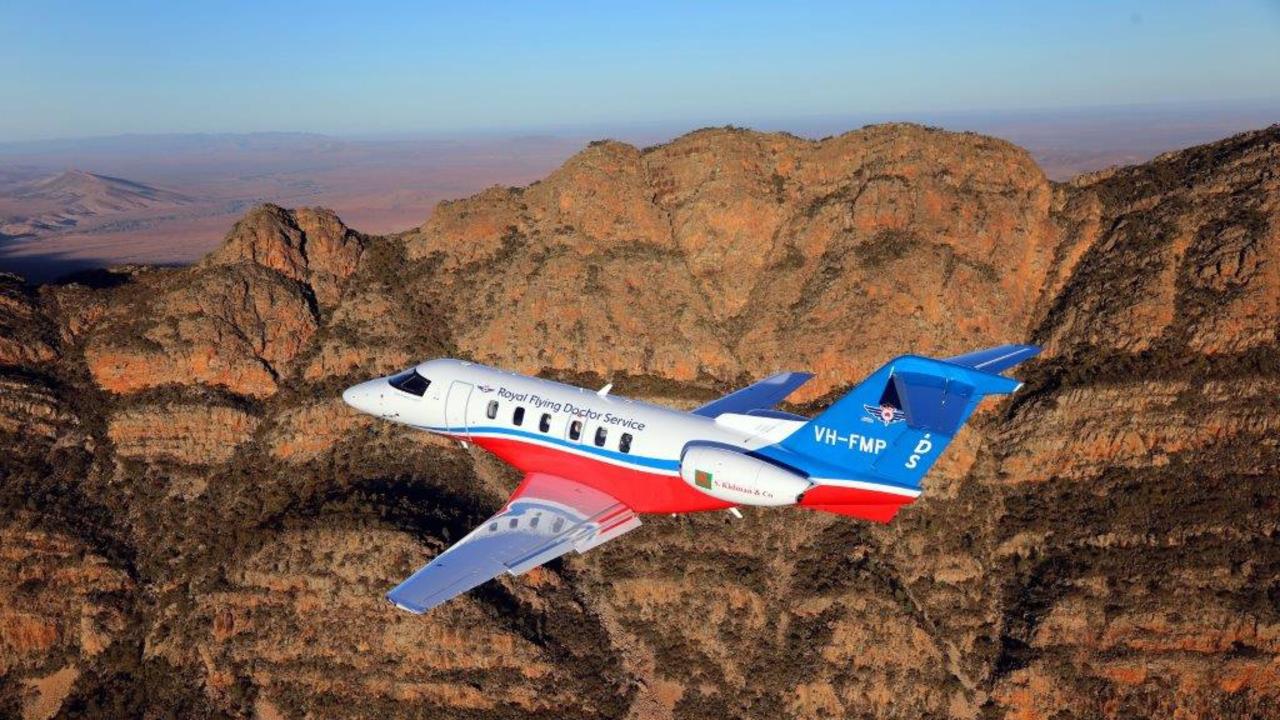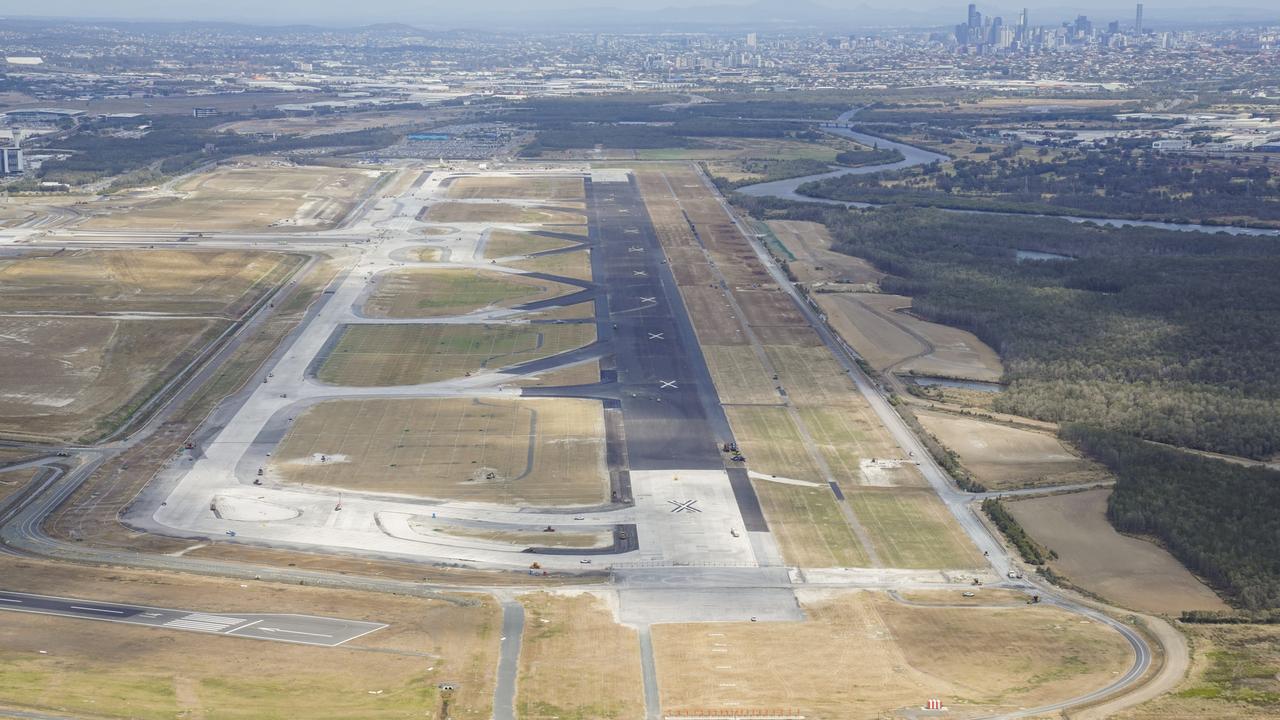Surprising story behind the grass surrounding Brisbane Airport’s second runway
You’d need hundreds of Suncorp Stadiums to cover the ground around Brisbane Airport’s second runway, with a surprising amount of thought going into picking a suitable type of grass.
Future QLD
Don't miss out on the headlines from Future QLD. Followed categories will be added to My News.
IT’S Brisbane’s biggest lawn, an epic stretch of grass that would cover more than 200 Suncorp Stadiums and swallowed up nearly 500 Olympic swimming pools worth of recycled water.
Tinamba Turf general manager Hugo Struss said getting the right grass to surround Brisbane Airport’s new $1.3 billion runway provided some big challenges.
Among them was finding a grass which couldn’t only withstand the salt spray off Moreton Bay, but would also prevent the possibility of birdstrikes.

“A big thing was animals, and something that seeded the least of any other varieties,” Mr Struss said.
“They’re really looking for it to have enough anchor to stop any sediment movement around jet engines,” he said.
They picked Grand Prix, a hardy, aggressive grass variety that fit the bill.

The job of growing Grand Prix takes four months and 16 megalitres of water.
“It would be one of the largest commercial jobs out there,” he said.
Runway project director Paul Coughlan said the grass had been sown using an innovative “stolonisation” system.
Grass was grown by Tinamba Turf at their grass farms before it was baled up and trucked to the airport.
There the bales were shredded and the chopped up grass, with roots still attached were sprayed out onto top soil, watered and fertilised, striking new roots and growing.
The stolonisation technique required about one-tenth of the original grass that would have been needed to cover the 300ha of runway surrounds with traditional turf, Mr Coughlan said.
He said the water supply was recycled from the nearby Urban Utilities water treatment plant at Luggage Point, with 1.125 gigalitres of water, or 500 Olympic swimming pools, used for the runway concrete during construction and watering the grass.
The hardiness of the grass had been tested over the winter by turning off the taps and it had survived and thrived, Mr Coughlan said.
An expert at grass, Mr Struss said the best way to a perfect lawn was:
- Deep water once per week is the best, rather than several lighter waterings a week.
- Don’t overfertilise, especially in drought, as it will stress the plant.
- Regular mowing (once a week) will keep the grass healthier.


